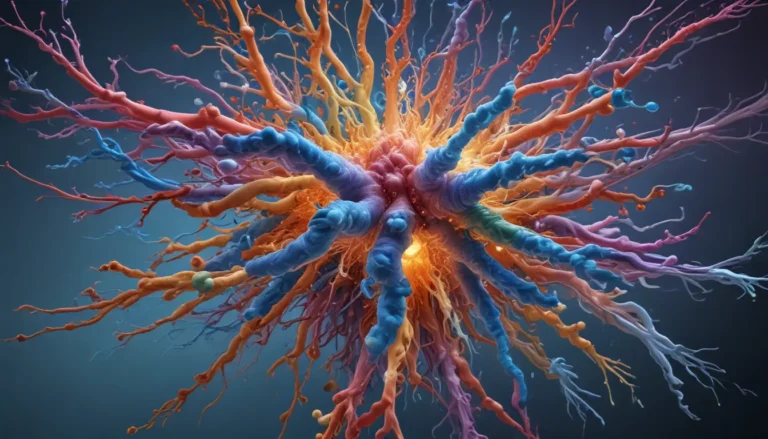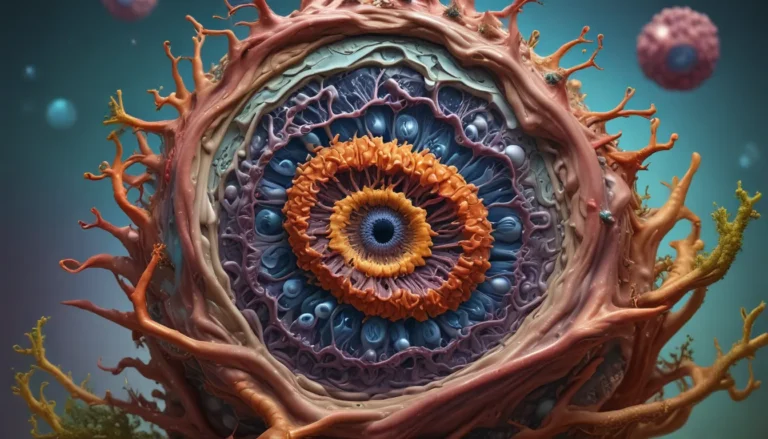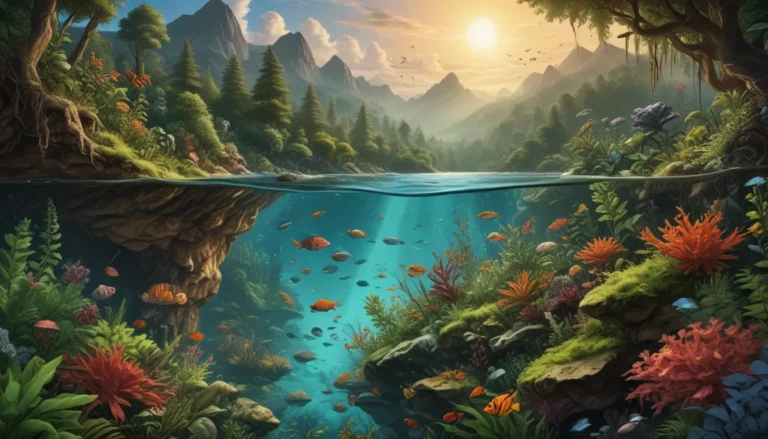A Note About Images: The images used in our articles are for illustration purposes only and may not exactly match the content. They are meant to engage readers, but the text should be relied upon for accurate information.
In the vast tapestry of the natural world, there exists a phenomenon that captivates our senses with its elegance and intricacy—gradient formation. Gradients, with their smooth transitions of colors and shades, can be found in various aspects of our environment, from the hues of a sunset to the temperature variations in a forest. But what exactly is a gradient, and how does it come to be?
Understanding the Art of Gradient Formation
At its core, a gradient signifies a gradual change in a property or characteristic over a distance. It manifests in physical, chemical, and biological systems, playing a pivotal role in shaping the world around us. By unraveling the secrets behind the formation and significance of gradients, we gain valuable insights into the workings of nature and its mesmerizing beauty.
The Marvel of Color Psychology
Gradients wield a profound influence on human emotions and perceptions through the use of different colors. Each hue in a gradient can evoke distinct emotional responses, making gradient formation a potent tool in design and marketing. The significance of creating smooth transitions between colors in a gradient cannot be overstated, as it leads to visually harmonious effects that captivate the eye and stir the soul.
Illuminating the Influence of Light and Shadow
In the realm of art and design, gradient formation often mimics the interplay of light and shadow, infusing depth and dimension into digital artworks, illustrations, and user interfaces. By harnessing gradients, designers can create visually striking backgrounds, buttons, logos, and other elements that engage and enchant the viewer.
Embarking on a Journey Through Evolution of Gradient Styles
Over time, gradient styles have undergone a fascinating evolution, transcending traditional linear gradients to encompass more intricate and trendy designs like flat gradients, duotone, and metallic gradients. These evolving styles reflect the dynamic nature of design and the ever-changing landscape of visual expression.
Navigating the Landscape of Web and Graphic Design
Gradients serve as a cornerstone in web and graphic design, enriching designs with depth and visual interest. By incorporating gradients into various design elements, designers can craft captivating experiences that resonate with audiences on a profound level. The seamless integration of gradients across platforms ensures a consistent visual journey for users as they navigate the digital landscape.
Pioneering New Frontiers in Gradient Technology
With technological advancements pushing boundaries, gradients are poised to play an even more significant role in shaping the future of design. From augmented reality to virtual reality and immersive digital experiences, gradients are poised to redefine the ways in which we interact with and experience digital content.
Bridging the Gap Between Gradients and Branding
The marriage of gradient formation with branding and marketing strategies yields compelling results, enhancing brand identities, eliciting emotions, and shaping consumer perceptions. Gradients serve as powerful visual cues that help brands establish a distinct identity and forge deeper connections with their target audience.
Embracing Diversity Through Cultural Significance of Gradients
Gradients hold cultural significance in diverse communities worldwide, symbolizing unity, diversity, and the convergence of different elements or ideas. By embracing gradients as a symbol of inclusivity and harmony, communities can celebrate the rich tapestry of cultures that weave together to form our global society.
Nurturing Inspiration From Gradient Formation in Nature
Nature, with its awe-inspiring gradients seen in sunsets, rainbows, and ocean horizons, serves as a wellspring of inspiration for artists and designers. These natural gradients inspire creators to replicate the mesmerizing color transitions found in the natural world, infusing their work with vibrancy and vitality.
Peering Through the Lens of Gradient Formation in Digital Photography
Photographers leverage gradient filters and post-processing techniques to enhance the aesthetic appeal of their images, crafting a gradual shift in lighting and color tones that captivate the viewer’s gaze. By harnessing the power of gradients, photographers elevate their craft to new heights of visual storytelling and artistic expression.
Unlocking the Potential of Gradient Formation in the Future
As we stand on the cusp of technological innovation, the realm of gradient formation holds immense potential for future applications in augmented reality, virtual reality, and immersive digital experiences. By harnessing the boundless possibilities of gradient technology, we pave the way for a future where creativity knows no bounds.
Final Thoughts on the Enigmatic World of Gradients
In conclusion, gradient formation stands as a testament to the exquisite complexity and beauty that permeate our natural world. From the delicate dance of colors in a sunset to the intricate patterns on a seashell, gradients reveal the underlying harmony that governs the universe. By delving into the nuances of gradient formation, we unlock a treasure trove of knowledge that enriches our understanding of life’s mysteries and propels us toward new frontiers of discovery.
FAQs: Exploring the Depths of Gradient Formation
- What defines a gradient?
-
A gradient denotes a gradual change in the concentration of a substance or physical property over a specified distance.
-
How do gradients manifest in biological systems?
-
Gradients in biological systems arise through mechanisms like diffusion, active transport, and morphogenetic signaling pathways.
-
What role do gradients play in embryonic development?
-
Gradients guide the differentiation of cells and the patterning of tissues and organs during embryonic development.
-
How do gradients contribute to cellular signaling?
-
Gradients offer directional cues for cellular signaling, enabling cells to respond to specific concentrations of signaling molecules and trigger appropriate physiological responses.
-
Are gradients significant in the realm of medicine?
-
Yes, understanding how gradients impact tissue regeneration, wound healing, and drug delivery holds immense potential for developing more effective therapeutic interventions.
-
Can gradients be manipulated for practical uses?
-
Indeed, researchers are exploring ways to engineer gradients for applications in tissue engineering, drug delivery, and biomedical research.
-
How are gradients studied in laboratory settings?
-
Techniques such as microfluidics, imaging, mathematical modeling, and genetic manipulation of organisms enable the study of gradients in controlled environments.
-
Are gradients confined to biological systems only?
-
No, gradients extend beyond biological systems to encompass physical and chemical processes like molecule diffusion and temperature gradients.
-
Can gradients be disrupted or altered in biological systems?
-
Gradients can be disrupted or altered due to genetic mutations, environmental factors, or experimental manipulations in biological systems.
-
How do gradients shape ecological interactions?
- Gradients influence the distribution of species, nutrient availability, and energy flow within ecosystems, playing a pivotal role in ecological interactions.
Embark on a journey through the wondrous world of gradient formation, where artistry meets science, and beauty intertwines with function. As we delve into the depths of this captivating phenomenon, let us celebrate the kaleidoscope of colors and emotions that gradients evoke. With each gradient, a story unfolds, a world emerges, and a universe of possibilities awaits. Join us on this odyssey of discovery and revelation, as we unravel the mysteries of gradient formation and embrace the vibrant tapestry of life in all its colorful splendor.






